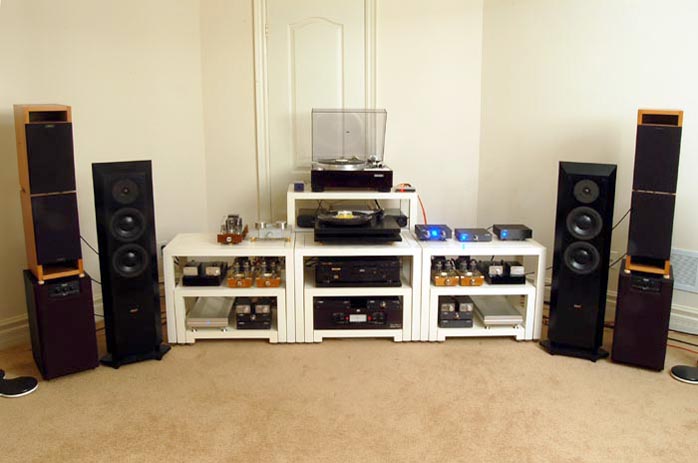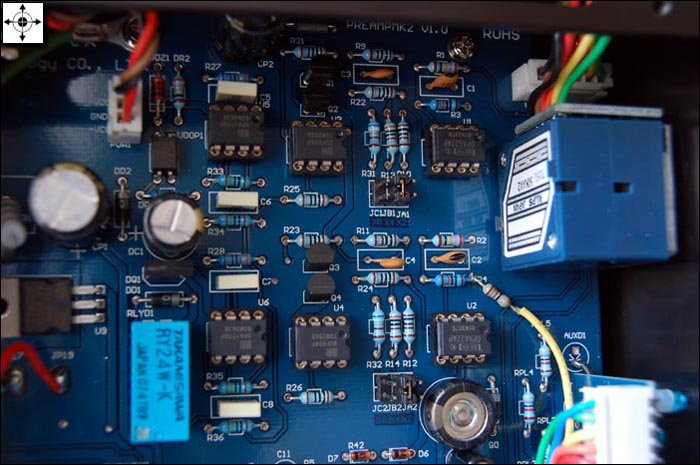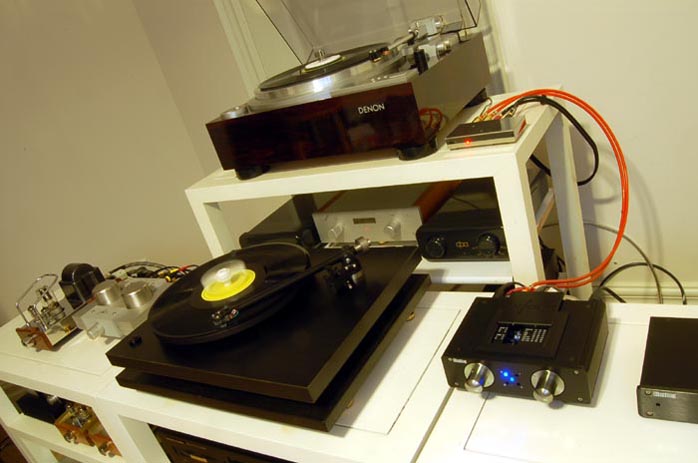This review page is supported in part by the sponsors whose ad banners are displayed below |
 |
| Getting back in line: At long last, I’m getting to the line stage of the PREference. The Dared MC-7P is my alternative preamp to the NuForce P9 in this system, Restek Radiant CD player the digital source. Unlike some tube preamps that tend to add excessive valve bloom, the MC-7P does just right by the NuForce Reference 9 V2 and works wonders on some recordings on certain days. (They say atmospheric pressure and humidity alter acoustic behaviour.) It would be interesting to find out how the PREference fit in.
|
 |
Here the 2L Nordic Sound [2L RR1-SABD] provided a fantastic array of music to facilitate my review project. While NuForce’s P9 presented Britten’s Simple Symphony in high definition, the Dared MC-7P was warmer, airier and more polished. The PREference took the middle ground. Vocals (Vivaldi’s Cantata sung by Tone Wik) was definitely the Dared’s forté and Chikada Duo’s percussion was NuForce’s. The stark “Fuga” from Bartok’s Solo Violin Sonata was harder to pin. NuForce was befittingly abrasive and lightning fast, Dared honed and elastic, PREference perhaps struck the perfect balance. Mozart’s D Major Violin Concerto and Sonata for Two Pianos expanded to a wider soundstage with the NuForce P9 but veered back a few feet to a deeper soundstage with the PREference. That really capitalized on the layering strength of Apogee’s Stage. Not only did the chorus in Islandsmoen’s Requiem peel off in tiers from two or three feet behind mid stage to far back, even the four string players in the Haydn Quartet were clearly spaced out in the four corners of an imaginary trapezoid.
|
|
|
|
 |
Up to that point, I was convinced that the PREference was a serious contender to compete with preamplifiers in the $3,000 category. The $250 phono stage posed a serious threat to anything at three or four times its price. There was no point matching it to the existing KingRex amp (T20/T20U being the only choice) because it was meant to match its better models (the KingRex 50wpc power amp is forthcoming shortly). As I concluded the audition, I returned the PREference to where I started and hooked it up to the Marantz SA8260 + NuForce Reference 9 V2 SE + Dynaudio Facette system. The purpose this time was twofold:
(A) To focus on the line stage performance which I initially thought was going to be the main part of this review, and
(B) to compare it with the Audio Zone Pre T-1, my reference preamp for this system.
|
 |
The PREference offers three levels of selectable gain: 7dB, 14dB and 20dB. Which one to use is not a straight scientific or mathematical question that can be met with a simple answer. Let’s tackle math first. Whether a power amp can deliver full power of 300wpc into 4 ohms as claimed in this case for the NuForce Reference 9 depends on two variables: source output voltage and preamp gain. For simplicity sake, it usually requires a combined effort of roughly 1vrms to deliver full power. Most digital source equipment claims an output power of 2Vrms. Theoretically, a preamp with no gain (x1) would be sufficient. By that token any passive preamp could do the job but why we do always feel that most of them are ill-equipped for huge orchestral works? Similarly, why do we always feel that dynamics are compromised when we drive a power amp direct from a CD player with variable power output?
|
|
|
Experience has told us that specs for most source components are generalized as an industry practice. Remember that these output ratings are max figures and derive from pure sine-wave constant test signals which are snapshots in times and very different from constantly changing real music signal not only in magnitude but in distribution through the frequency range. Once a respectable engineer told me that the most realistic way to interpret claimed output power was to apply the 10% exchange rate: 2Vrms = 0.2Vrms. In reality, more hard-to-control variables will be added by the pot, non-standardized recorded signal strength of the software and so on. As a rule of thumb, most people would think more gain on reserve is better than less. But in audition, a gain overdose will increase noise and make the overall presentation edgier.
Bearing in mind that electronics are based on linear designs, human hearing doesn’t conform to linear wave propagation patterns (in fact, closer to logarithmic) and is more susceptive to masking effects (as in a complicated orchestral piece) and has a very different perception of relative loudness. Human hearing, that of audiophiles in particular, is easily satisfied with quantity (SPL) but very critical of quality (sonic integrity). With these basics, we can better assess (and try to explain) the relevance of selectable gain in a combined ‘scientific’ and ‘psychoacoustic’ light.
|
 |
  |
 |
|